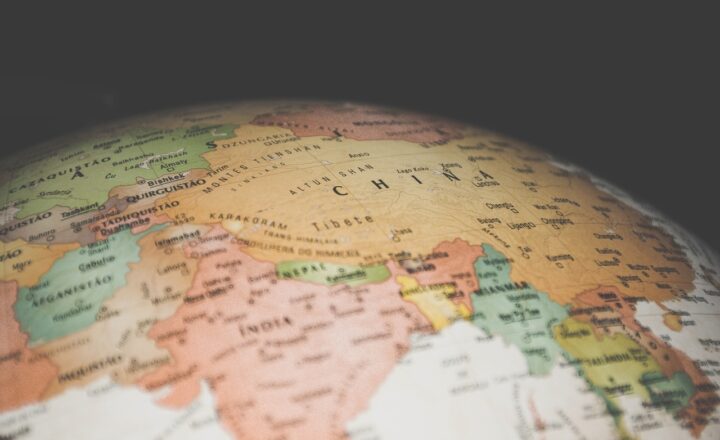How Ancient Civilizations Predicted Natural Events Without Modern Tools
November 9, 2024

Civilizations throughout history have demonstrated remarkable abilities to predict natural events long before the advent of modern technology. From the vast empires of Mesopotamia to the philosophically rich societies of ancient China, these cultures relied on keen observation, deep ecological understanding, and mythology to forecast changes in their environment. This article delves into how ancient civilizations harnessed their observational prowess to predict natural events such as floods, droughts, and celestial occurrences.
1. The Mark of Observation: Key to Prediction
One defining feature of ancient populations was their ability to closely observe their environment. Survival depended heavily on accurate predictions of seasonal shifts and environmental hazards. This often took the form of:
- Celestial Patterns: Ancient civilizations meticulously recorded the positions of the sun, moon, and stars. The Egyptians, for instance, designed their agricultural calendar around the annual flooding of the Nile, tied closely to the lunar cycles.
The meticulous observations allowed not only for agricultural planning but also for spiritual and civic celebrations that harmonized with these celestial movements. - Flora and Fauna Behavior: Animals and plants also provided clues regarding imminent changes in the climate. The changes in migration patterns of birds or the early blooming of flowers became harbingers of seasonal shifts. Indigenous tribes, for example, could anticipate the best times for fishing or hunting solely based on these natural cues.
This form of predictive knowledge required extensive communal knowledge-sharing and tradition, ensuring that wisdom regarding natural phenomena could be passed through generations.
2. Mesopotamia: The Cradle of Weather Prediction
In ancient Mesopotamia, the Sumerians made significant strides in understanding the atmospheric phenomena. They developed intricate systems of astrology and meteorology that allowed them to:
- Record Weather Patterns: Detailed records of weather and significant natural events were inscribed on clay tablets. This data was used to develop predictive models for agricultural planning, such as when to sow and harvest crops.
- Divine Interpretation: Sumerians believed that the gods influenced natural events. Astronomy and astrology were deeply intertwined, as they sought to make sense of natural disasters as omens reflecting divine displeasure. By correlating celestial movements with catastrophic events, they gained insight into potential future occurrences.
These ancient procedures of meticulous observation and recording laid the groundwork for later meteorological practices.
3. Indigenous Knowledge: America’s Early Weather Wizards
Native American tribes across North America exhibited a profound understanding of their ecosystems, allowing them to predict weather changes with remarkable precision. They employed qualitative methods such as:
- Natural Indicators: The patterns in nature, such as the behavior of animals and the direction of the wind, provided cues about upcoming weather changes. For instance, a significant increase in the number of insects could signal an impending storm, allowing tribes to prepare their homes and resources.
- Folklore and Oral Traditions: Wisdom passed down through songs and stories about weather phenomena allowed communities to take heed of past events and prepare accordingly. These stories integrated a complex understanding of nature’s cycles.
This indigenous knowledge, rooted in a sustainable relationship with nature, has often been overlooked in favor of modern science, yet it provided crucial insights into climate and environmental events.
4. Ancient China: The Harmony of Heaven and Earth
In ancient China, agriculture was paramount, and the understanding of natural cycles was essential for survival. Their predictions were closely tied to:
- Astrology and the Twelve Earthly Branches: Astrology was a crucial aspect of life, with calendars marked according to the lunar cycles, and the Chinese Zodiac helped predict weather changes. The Twelve Earthly Branches were observed to understand better how seasons influenced farming.
- Documented Observations: Historical records, such as the “Book of Changes” (I Ching), documented natural phenomena and their interpretations, allowing later generations to learn from past predictions. They meticulously recorded the conditions under which successful harvests occurred.
Ancient Chinese philosophers linked human activities to natural events, believing that harmony among heaven, earth, and humanity was essential for the correct predictions of future occurrences.
5. The Role of Religion and Mythology in Prediction
For many ancient civilizations, religious practices and mythology played a pivotal role in understanding and predicting natural events. Cultures often intertwined their daily lives with worship and sacred rituals meant to appease or forecast the whims of nature:
- Ritual Practices: Festivals aligned with agricultural cycles often served as a means to connect with the divine and signal the impending seasons. For example, in ancient Egypt, rituals were performed to honor the Nile and ensure its annual flooding.
- Mythological Explanations: Myths explaining natural disasters as acts of the gods encouraged people to look for patterns and prepare for future occurrences based on earlier divine signs. These stories significantly contributed to communal knowledge about how to respond to unpredictable weather events.
This interplay between religion and weather prediction reflects the perspectives of ancient people who sought to comprehend their place within nature’s unpredictable flow.
6. The Legacy of Ancient Predictive Techniques
The predictive methods employed by ancient civilizations showcase our predecessors’ remarkable ingenuity and ability to adapt by harnessing their observational skills. Here are a few key takeaways that underline the legacy of these techniques:
- Respect for Nature: The ecological understanding shown by these cultures remains more relevant today as the world faces climate change. Current societies can learn to observe and respect natural signs as a means of sustainable living.
- Interconnectedness of Knowledge: The amalgamation of observation, documentation, mythology, and practical application demonstrates an early form of interdisciplinary studies. This multicultural understanding paved the way for future generations, setting a foundation for modern sciences.
Understanding these ancient systems of prediction can inspire modern approaches to environmental consciousness and the application of indigenous wisdom into contemporary climate action strategies. In honoring these practices, we might also find new avenues to anticipate and mitigate natural events today.
Conclusion
Ancient civilizations may not have had the technological tools we possess today, but their innovative techniques for predicting natural events reveal an inspiring blend of observation, reverence for nature, and community wisdom. By studying these long-forgotten methods, we can glean important lessons about resilience and adaptability in the face of an ever-shifting natural world. As we move forward, let us remember the wisdom of our ancestors and apply it to guide our actions toward a more sustainable future, where we work in harmony with the rhythms of the earth.







